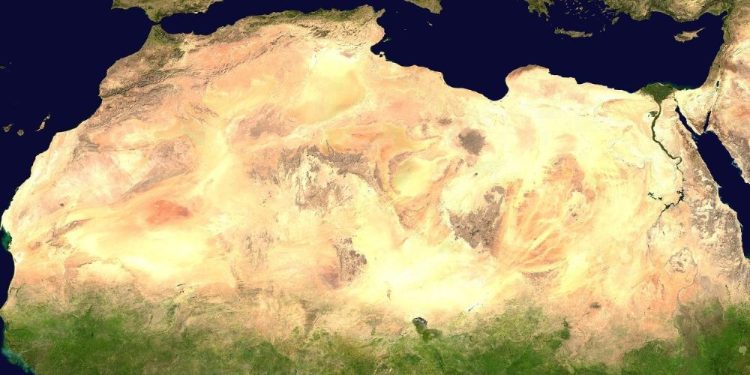- Watch The JD Rucker Show every day to be truly informed.
(Natural News)—An award-winning geologist and climate researcher at the University of Cologne in Germany says that climate fanatics who warn about the expansion of deserts due to global warming are lying.
Dr. Stefan Kröpelin, who specializes in the study of the eastern Sahara Desert and its climatic history, has been active in the field over there for more than 40 years. He said in a recent interview that deserts like the Sahara are actually shrinking, meaning they are becoming greener with plants and vegetation.
Going back as far as the late 1980s, rains have been spreading across northern Sudan and elsewhere in northern Africa. This has had the effect of greening the region and making the harsh Sahara Desert smaller than it once was.
“The desert is shrinking,” Dr. Kröpelin said in the interview. “It is not growing.”
(Related: Earlier this year, PBS announced the unveiling of a new “climate psychology therapist” to help mentally ill climate fanatics cope with the reality of carbon.)
The climate is always “gradually” changing
Based on the vast multitude of sediment cores collected coupled with the proxy data they yielded, Dr. Kröpelin says that the Sahara Desert will continue greening as rains move northward through it towards southern Europe.
“The most important studies that we conducted all show that after the ice age, when global temperatures rose, the Sahara greened,” Dr. Kröpelin explained. “The monsoon rains increased and the ground water rose.”
Over many years, all that new water led to the growth and spread of both vegetation and the wildlife that feeds on it. In other words, the Sahara Desert is slowly turning into the Sahara forest, or perhaps the Sahara jungle.
But wait: What about the so-called “dramatic tipping point” for the climate that researchers at the Potsdam Institute (PIK) and elsewhere claim is going to occur in an instant, destroying everything in its path? Dr. Kröpelin is skeptical about these claims, explaining that the scientists who claim this “never did any studies themselves in any climate zone on the earth, and they don’t understand how complex climate change is.”
Besides the occasional catastrophic geological event, the climate is always changing, Dr. Kröpelin says.
“It’s not how nature works,” he explained about the cataclysmic scenarios put forth by today’s leading climate fanatics. “Things change gradually.”
“We have to be careful that things don’t get half a degree warmer, otherwise everything will collapse, is, of course, complete nonsense.”
Further describing the “tipping point” concept as “baseless,” Dr. Kröpelin is insistent that the slowly changing climate is completely normal, and that people need not worry as they are being told by the “experts” to do.
“Much more indicates that they won’t happen than that they will happen,” Dr. Kröpelin says about the “tipping point” claims.
Last year at a gathering in Munich, Dr. Kröpelin also addressed the idea of carbon dioxide (CO2)-induced climate tipping points, calling them completely outlandish. He also called the prospect of the Sahara Desert somehow spreading into Europe due to global warming completely preposterous.
U of Cologne Sahara Expert, Geologist Dr. Stefan Kröpelin Says Desert Is Shrinking, Calls Alarmist Tipping Points From 0.5°C Warming "Complete Nonsense"…Modelers Don't Understand Climate Complexity… Climate Changes Gradual @ClimateDepot @EIKE_KLIMA https://t.co/mVrbahV3Pf pic.twitter.com/XwnbdfupHv
— Pierre L. Gosselin (@NoTricksZone) November 11, 2023
“This report will be called ‘misinformation’ by the Climate Cult and the professor will be trashed on the web, such as a wiki entry,” one commenter wrote about how Dr. Kröpelin is treading on thin ice with his scientific beliefs.
“Some kid with a connection in the family basement knows about ‘deniers’ even if the location of the eastern Sahara Desert is a complete mystery.”
The latest news about the myth of man-made climate change can be found at Climate.news.
- Concerned about your life’s savings as the multiple challenges decimate retirement accounts? You’re not alone. Find out how Genesis Precious Metals can help you secure your wealth with a proper self-directed IRA backed by physical precious metals.
Sources for this article include:
What Would You Do If Pharmacies Couldn’t Provide You With Crucial Medications or Antibiotics?
The medication supply chain from China and India is more fragile than ever since Covid. The US is not equipped to handle our pharmaceutical needs. We’ve already seen shortages with antibiotics and other medications in recent months and pharmaceutical challenges are becoming more frequent today.
Our partners at Jase Medical offer a simple solution for Americans to be prepared in case things go south. Their “Jase Case” gives Americans emergency antibiotics they can store away while their “Jase Daily” offers a wide array of prescription drugs to treat the ailments most common to Americans.
They do this through a process that embraces medical freedom. Their secure online form allows board-certified physicians to prescribe the needed drugs. They are then delivered directly to the customer from their pharmacy network. The physicians are available to answer treatment related questions.








